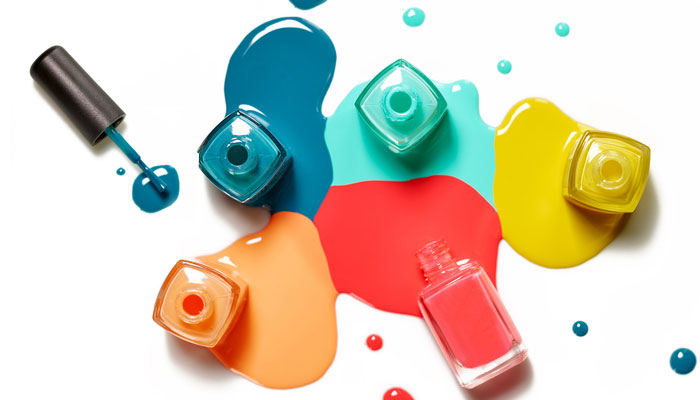
You walk out of the salon, flashing your picture perfect pinkies. For the past hour your finger nails have been the center of attention, buffed and polished to perfection. But often—within minutes—a majority of manicures go bad. A chip here, smudge there and all the hard work comes to naught. Instead of spending big bucks—and then crying over a ruined nail job—read on for ten common nail polish mistakes and their fixes. Then give yourself a lasting, salon style nail makeover sitting on your sofa.
1. Skipping the base coat
In the interest of time, how many of you have done just that. Base coats can prevent the dreaded yellow, discolored nail effect. Plus you also get a smoother final effect. Base coats like LYN Lacquers - Base Coat are designed to fill in tiny ridges on the nail smoothing out the final effect. They also help polish last longer. It's an extra step, but totally worth the effort.
2. Skipping the top coat
This is another no-no if you want your polish to last longer than a couple of days. Skipping the topcoat makes the polish less shiny and prone to chips. In fact, it's a good idea to top up the top coast every other day to keep the polish fresh and crisp. Nykaa suggests a combined product like Sally Hansen Triple Shine Top Coat Vernis De Protection.
3. Showering soon after a paint job
That's the worst thing you can do to your manicure. Exposing fresh nail polish to hot water, steam and soap can make it smudge or bubble up because it isn't fully set. Ideally, you should wait at least one hour before you take a shower.
4. Hitting the hay soon after painting your nails
Don't let this be the last thing you do at bedtime. Typically nail polish dries in 20-30 minutes, even longer depending on the density of the paint. If you want a quick dry, wait two-three minutes and then dip your hands in very cold water for a few minutes. Don't hold your hands under running water because the force of water can smudge nail polish.
5. Using too thick nail polish or too many coats
Picked up a shade that looks darker than it is? Or can't beat to throw away an old fave even though it has turned thick? Applying paint in thick layers can make drying a task. To prevent smudges and bubbles, apply thin, even coats and wait for two minutes between coats. Blow on the nail or use a hair dryer on cool to speed up drying. It's a good idea to chuck that too thick polish bottle. Experts say extra heavy polish is more likely to flow into and under cuticles. Cleaning this up can be a chore and look untidy besides.
6. Applying polish in just one stroke
Take a cue from your salon manicurist. The ideal way to apply polish is in three to four strokes, first the tip then the sides. With just one stroke it's difficult to get the sidewalls and cuticle area completely. Plus, the color grows out in a day or two. Instead start in the center near the cuticle, swipe down the right side up to the tip and then repeat on the left. Finally, swipe down the middle. If there are uncovered spots, give one final swipe.
7. Painting greasy, unclean nails
Applying polish right after a meal or right after a manicure without wiping finger nails clean is a bad idea. A film of oil on the nail surface makes it easier for polish to slip and chip. Use a mild hand cream like Sally Hansen Nails & Cuticles Hand Creme 24 HR Moisture, wait a while and wipe finger nails with a damp cloth before applying nail polish to ensure all surface oil is removed. Then apply a base coat before applying nail polish.
8. Using the nail polish you bought ages ago
Chuck it. As nail polish ages the solvents that give it the liquidity starts evaporating, making polish thick and sticky. It's impossible to get a thin, smooth coat using such a formula. Rule of thumb: replace nail polishes every year.
9. The cuticle challenge
Over diligent nail polishing can engulf the entire cuticle if you're not careful. A messy look that's totally avoidable. Similarly being extra cautious and leaving a big gap that looks unkempt especially when the nail starts growing out. Remember, you only need to leave a hair width space between the polish and the cuticle.
10. Using a cheap acetone remover
Choose your nail polish remover with care. Avoid acetone-based removers because they dehydrate the nail and surrounding cuticle. Use it too often and you can permanently damage the nail. Instead use non-acetone based removers like Kinetics Non-Acetone Lazy Lizard Polish Remover . They are much gentler on nails.

